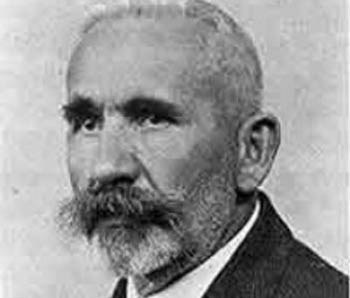
Famous People
 A KRAEPELIN APPRECIATION
A KRAEPELIN APPRECIATION

Why his 1921 opus is way ahead of the psychiatry of today.
by John McManamy

Why his 1921 opus is way ahead of the psychiatry of today.
by John McManamy
SEVERAL YEARS AGO, I read Emil Kraepelin's classic "Manic-Depressive Insanity." Never heard of him? Bet you heard of Freud, who was born the same year.
All Kraepelin did was "discover" manic-depression, schizophrenia, co-discover Alzheimers, and found diagnostic psychiatry. His body of work, based on meticulous observations of thousands of patients in German asylums, spans from 1893 to 1927. "Manic-Depressive Insanity" was published in English in 1921, extracted from his much larger "Compendium."
Kraepelin's pioneering approach to classifying mental disorders inspired the modern DSM-III and IV, though - ironically - he has to be rolling in his grave over how both editions got manic-depression all wrong. Let's hear from the source what manic-depression really is:
Manic-depressive insanity ... includes on the one hand the whole domain of so-called periodic and circular insanity, on the other hand simple mania, the greater part of the morbid states termed melancholia and also a not inconsiderable number of cases of amentia.
Plus "colorings of mood" that embrace both pathology and personality.
All these diverse elements, claims Kraepelin, "represent manifestations of a single morbid process."
In other words, someone who cycles up and down, gets depressed, flips into mania, has messed up thinking, and has stuff going on with moods is suffering from one illness, not five, not twenty-five. Equally important, the depression itself (even without evidence of mania) is strong evidence of manic-depression, not something else. All this was revolutionary thinking way back in the first part of the previous century, and still remains ahead of the curve in the first half of this one.
Kraepelin's view of manic-depression, then, is vastly more inclusive than the modern DSM's "bipolar disorder," which only recognizes recurrent depression on the other side of the diagnostic divide. Modern psychiatry lumps recurrent depression with chronic depression, which explains why antidepressants don't work for a good many individuals and can even cause harm.
You would think the DSM-5 would fix this, but do psychiatrists listen?
In addition to offering finally-detailed clinical descriptions of depression and mania, Kraepelin identified transient "mixed" states. Here, we can truly appreciate the master at work.
Kraepelin asks us to conceptualize not just mood cycling up and down, but also intellect and volition, but not necessarily in sync. Thus, instead of pure mania (flight of ideas, exalted mood, pressure of activity) or classic depression (inhibition of thought, mournful moodiness, irresoluteness) we variously have:
Depressive or anxious mania (where depression takes the place of a cheerful mood).
Excited depression (where flight of ideas is replaced by inhibited thought).
Mania with poverty of thought (instead of flight of ideas).
Manic stupor (a depression with cheerful mood).
Inhibited mania (flight of ideas with cheerful mood and psychomotor inhibition).
If you find, say, "manic stupor" confusing, don't worry, Kraepelin has your back. Sample:
The patients are usually quite inaccessible, do not trouble themselves about their surroundings, give no answer, at most speak in a low voice straight in front, smile without recognizable cause, lie perfectly quiet in bed or tidy about at their clothes and bed-clothes, decorate themselves in an extraordinary way, and all this without any sign of outward restlessness or emotional excitement. ...
SIGN UP FOR MY FREE EMAIL NEWSLETTER
The reason you probably haven't heard about all this is because the DSM flies in the face of reality by categorizing a mixed state as full-blown depression coexisting with full-blown mania. The DSM-5 would partially redress this, but comes nowhere near to restoring Kraepelin.
Kraepelin has been referred to as the father of modern psychiatry, but that does him a grave injustice. If Kraepelin were alive today, he would take a match to the DSM and start over - I've heard that sentiment expressed by a good many reform-minded psychiatrists. His "Manic-Depressive Insanity" from 1921 remains state-of-the-art. The psychiatry of today has a lot of catching up to do.
Reviewed July 16, 2016
NEW!
Follow me on the road. Check out my New Heart, New Start blog.
 MORE ARTICLES ON McMAN
MORE ARTICLES ON McMAN
 FEATURED VIDEOS
FEATURED VIDEOS









